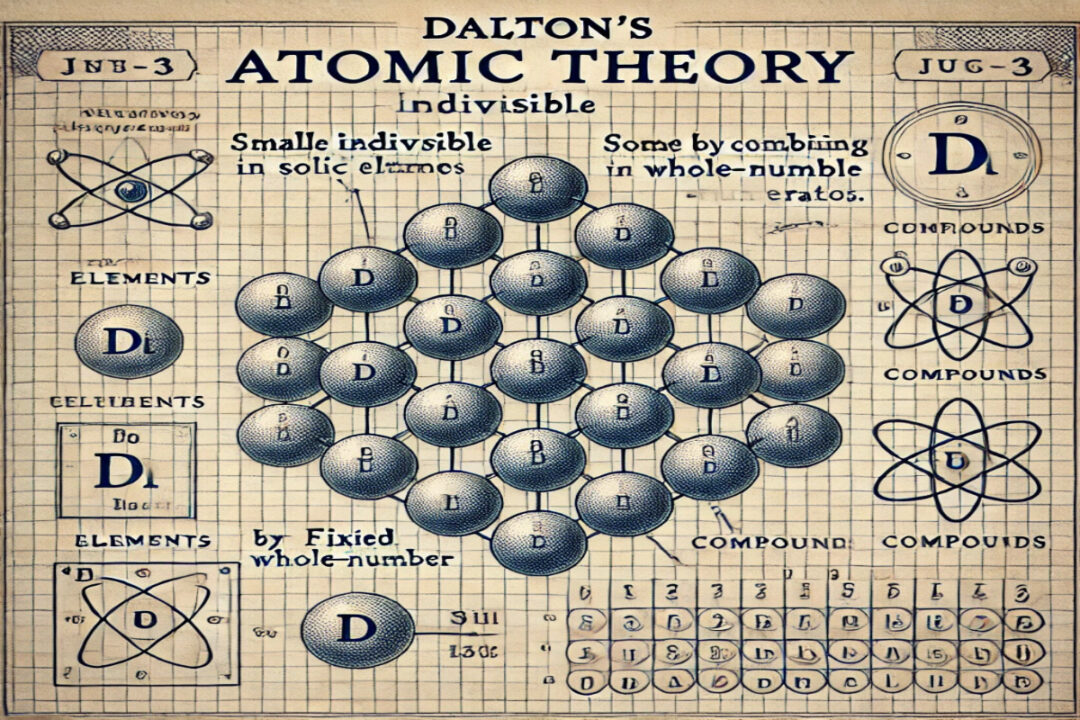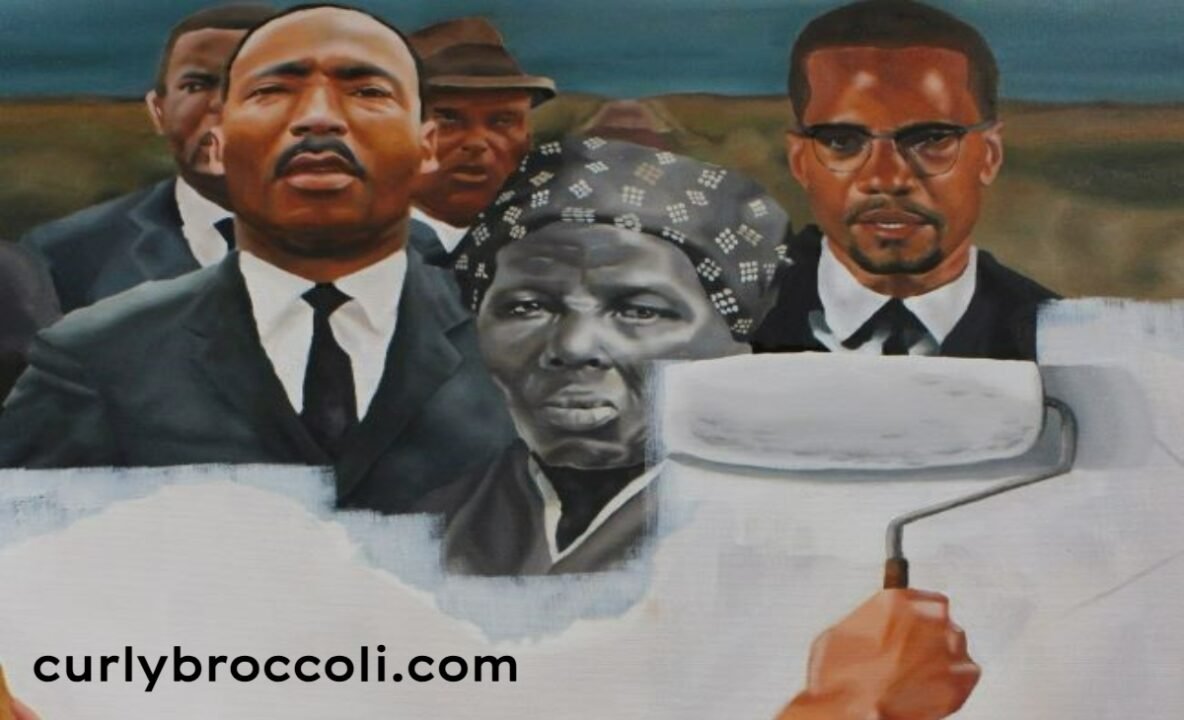Dalton’s Atomic Theory stands as one of the most significant milestones in the history of science, particularly in the field of chemistry. This theory laid the groundwork for our understanding of matter and its composition at the most fundamental level. By proposing that all matter is composed of small, indivisible particles called atoms, John Dalton set the stage for future scientific advancements. Let’s delve into the intricacies of Dalton’s Atomic Theory and its enduring impact on modern chemistry.
The Historical Context of Dalton’s Atomic Theory
Before Dalton’s Atomic Theory emerged, the concept of atoms had been floating around for centuries. Ancient Greek philosophers like Democritus speculated that matter was made up of tiny, indivisible particles. However, these ideas were largely philosophical and lacked experimental evidence.
By the late 18th century, chemists had started to notice patterns in chemical reactions and were increasingly curious about the nature of matter. John Dalton, a British scientist, was instrumental in transforming these philosophical musings into a scientific theory based on empirical evidence. His work, published in 1808 in “A New System of Chemical Philosophy,” provided the first cohesive atomic theory grounded in experimental results.
Key Postulates of Dalton’s Atomic Theory
Dalton’s Atomic Theory consists of several key postulates that revolutionized the field of chemistry:
All matter is composed of atoms.
According to Dalton, all matter is made up of extremely small particles called atoms. These atoms are indivisible and indestructible under normal chemical reactions, meaning they cannot be created or destroyed, only rearranged.
Atoms of a given element are identical in mass and properties.
Dalton proposed that atoms of a particular element are identical in terms of mass and chemical properties. This uniformity explained why elements reacted in predictable ways.
Compounds are formed by a combination of two or more different kinds of atoms.
Dalton suggested that chemical compounds are formed when atoms of different elements combine in fixed, simple whole-number ratios. This idea laid the foundation for the law of definite proportions.
Chemical reactions involve the rearrangement of atoms.
In Dalton’s view, chemical reactions do not change the atoms themselves but only the way they are combined. This principle helped explain the conservation of mass during chemical reactions.
Impact and Significance of Dalton’s Atomic Theory
Dalton’s Atomic Theory was groundbreaking because it provided a scientific explanation for the laws of chemical combination, which had been observed but not understood. His theory explained the Law of Conservation of Mass, the Law of Definite Proportions. The Law of Multiple Proportions, bringing clarity to the field of chemistry.
Law of Conservation of Mass:
Dalton’s theory supported the idea that mass is neither created nor destroyed in a chemical reaction, aligning with Antoine Lavoisier’s earlier work.
Law of Definite Proportions:
This law states that a chemical compound always contains the same proportion of elements by mass. Dalton’s theory explained that this consistency is due to the fixed ratio in which atoms combine to form compounds.
Law of Multiple Proportions:
Dalton’s theory also accounted for the observation that when two elements form more than one compound. The masses of one element that combine with a fixed mass of the other are in a simple whole-number ratio.
Limitations and Modifications to Dalton’s Atomic Theory
While Dalton’s Atomic Theory was revolutionary, it was not without its limitations. Subsequent scientific discoveries have led to modifications and refinements of his original postulates.
Atoms are divisible.
Contrary to Dalton’s assertion that atoms are indivisible, later discoveries revealed that atoms are composed of smaller subatomic particles: protons, neutrons, and electrons. The discovery of these particles led to the development of more complex atomic models.
Isotopes exist.
Dalton believed that all atoms of a given element were identical in mass. However, the discovery of isotopes—atoms of the same element with different masses—showed that this postulate was not entirely accurate.
Atomic structure is more complex.
Dalton’s model of the atom was simplistic, portraying atoms as solid, indivisible spheres. However, the discovery of the electron by J.J. Thomson and the subsequent development of quantum mechanics revealed that atoms have a complex internal structure with electrons in orbitals around the nucleus.
Dalton’s Atomic Theory in Modern Chemistry
Despite its limitations, Dalton’s Atomic Theory remains a foundational concept in modern chemistry. It introduced the idea that the behavior of matter could be explained by the arrangement and interaction of atoms. This concept is still central to our understanding of chemical reactions, bonding, and molecular structure.
The Role of Dalton’s Theory in Stoichiometry:
Dalton’s theory plays a crucial role in stoichiometry, the branch of chemistry that deals with the quantitative relationships between reactants and products in a chemical reaction. By understanding that atoms combine in fixed ratios, chemists can predict the outcomes of reactions with precision.
Atomic Theory and the Periodic Table:
Dalton’s work also laid the groundwork for the development of the periodic table. By recognizing that elements are made up of unique atoms, scientists were able to organize elements based on their atomic properties, leading to the creation of the modern periodic table by Dmitri Mendeleev.
Applications in Modern Science and Technology:
Dalton’s Atomic Theory continues to influence various fields, including materials science, nanotechnology, and pharmaceuticals. Understanding atomic interactions is crucial for the development of new materials, drugs, and technologies.
Dalton’s Atomic Theory: A Legacy of Scientific Progress
Dalton’s Atomic Theory was a monumental step forward in our understanding of the natural world. It provided a framework that allowed scientists to make sense of the patterns and regularities observed in chemical reactions. While later discoveries have refined and expanded upon Dalton’s ideas, the core principles of his theory remain embedded in the fabric of modern chemistry.
The legacy of Dalton’s Atomic Theory is evident in the way it paved the way for future discoveries. It taught scientists to think in terms of atoms and molecules, leading to a deeper understanding of chemical processes and the nature of matter itself. From the simplest chemical reaction to the most complex biological process, the principles of Dalton’s Atomic Theory continue to resonate throughout the scientific community.
FAQs
What is Dalton’s Atomic Theory?
Dalton’s Atomic Theory is a scientific theory proposed by John Dalton in 1808, which states that all matter is composed of indivisible atoms, and that atoms of a given element are identical in mass and properties.
Why is Dalton’s Atomic Theory important?
Dalton’s Atomic Theory is important because it provided the first scientific explanation for the laws of chemical combination and laid the groundwork for modern chemistry.
What are the main postulates of Dalton’s Atomic Theory?
The main postulates are: all matter is composed of atoms, atoms of a given element are identical, compounds are formed by the combination of different atoms, and chemical reactions involve the rearrangement of atoms.
What are the limitations of Dalton’s Atomic Theory?
The limitations include the discovery that atoms are divisible, the existence of isotopes, and the realization that atomic structure is more complex than Dalton initially proposed.
How did Dalton’s Atomic Theory impact the development of the periodic table?
Dalton’s theory helped scientists recognize that elements are made up of unique atoms, which led to the organization of elements based on atomic properties and the development of the periodic table.
Is Dalton’s Atomic Theory still relevant today?
Yes, despite modifications, the core principles of Dalton’s Atomic Theory remain relevant in modern chemistry, influencing everything from stoichiometry to the understanding of atomic interactions.
Dalton’s Atomic Theory represents a turning point in scientific history, transforming our understanding of matter from abstract concepts to a structured, empirical theory. While it has been refined over the years, its influence on chemistry is undeniable. The theory’s principles continue to guide scientific inquiry and technological innovation, proving that Dalton’s contribution to science is as relevant today as it was over two centuries ago.





